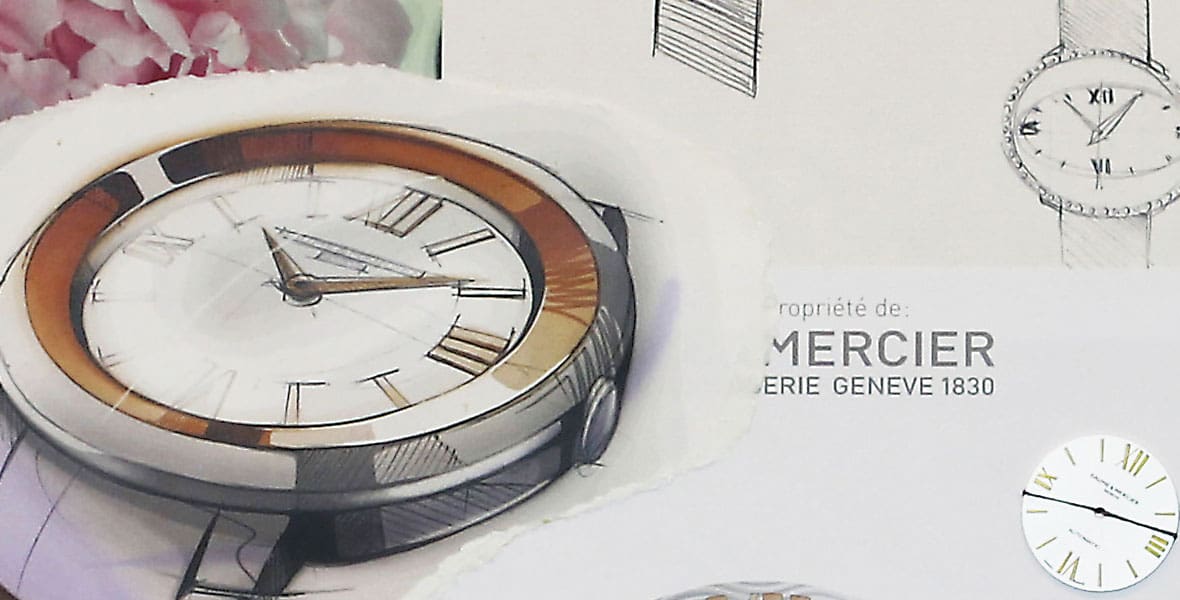INTERVIEW: Inside the watch design process with Alexandre Peraldi of Baume & Mercier
David Chalmers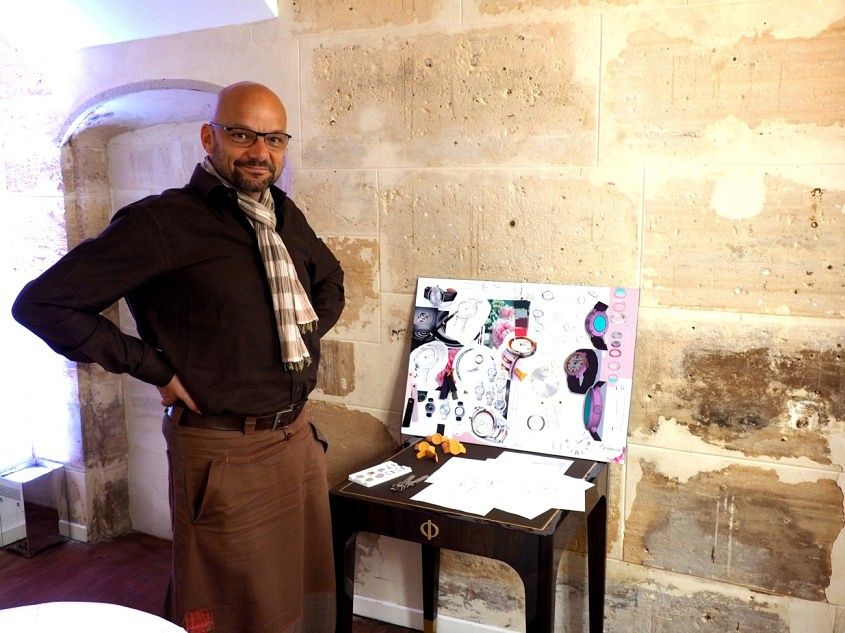
Earlier this month, Time+Tide took you behind the scenes of the global launch of Baume & Mercier’s new women’s collection, the Promesse, held in Paris. And the next day, while most of the guests from the launch party were recovering from the night before, I headed back to Hotel Brossier for a breakfast meeting with Alexandre Peraldi. Alexandre is the Design Director at Baume and Mercier and has worked with the company for more than 13 years.
Having lived with the Promesse project for four years, Peraldi is understandably proud of his new creation, a watch that presented serious challenges from a design perspective. It’s only when you get a chance to speak to the designers firsthand that you get a sense of the sheer amount of thought and effort that goes into making a watch look just right. Once again I was reminded of the Charles Eames quote, “the detail is the design”. Because, while the basic shape of the Promesse stayed largely unchanged throughout the creative gestation period, it was the small details that continually evolved to give the final design its distinctive character. We spoke not just about the Promesse, but also about Peraldi’s views on trends in women’s watches and which watches mean the most to him.
Why the Promesse Took Four Years
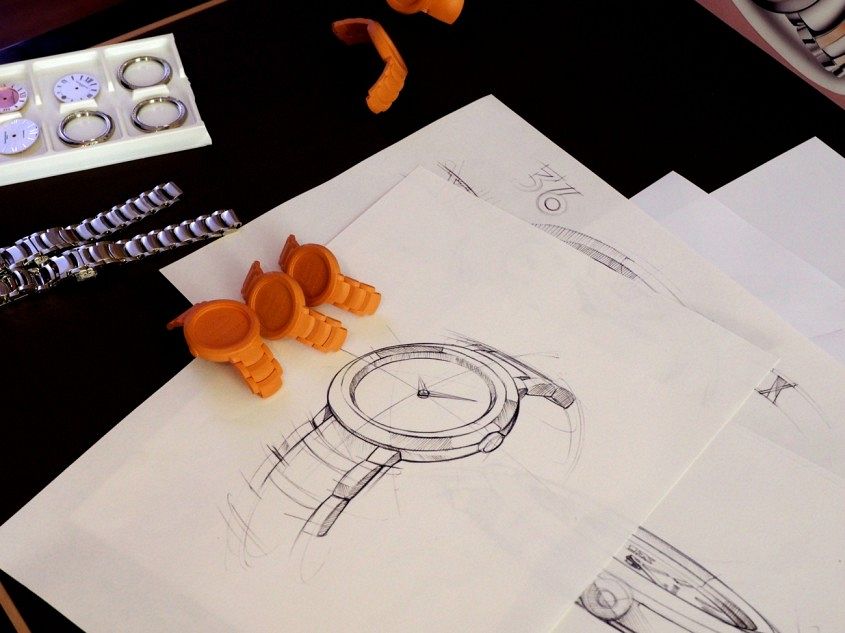
Yes, it took a whole four years to develop the Promesse. When you consider that some watch models have an entire lifespan shorter than this, the seriousness of Baume & Mercier’s commitment to this timepiece becomes very clear. Peraldi remembers the creative spark, that started the four year process – and shuffles through his papers to show the original sketch. “The beginning of the project was to create a new feminine watch, something different to the Linea,” he says. “We worked on four or five different ideas, and after one year we decided to focus on the simple one…this one.”
He explains the length of the creative process, harkening back to a quote from Steve Jobs, who famously said that “simple is harder than complex”. “It took a long time. From the beginning, from the very first idea for the new direction for this watch, it was two years until we had perfected the watch. We spent a long time developing the simplicity of the watch. And when it’s simple it’s difficult- always.”
“The most difficult part on this watch was the oval bezel with a shape like an ellipse. In the beginning, the case was done in one part, without any distinction between the bezel and the case. But the difficulty was to make the bezel stand out visually. We tried to have a satin finish – but it wasn’t feminine enough. In the end we found a solution- we added another metal part to the case, which is now two different parts: the case and the bezel that fits inside.”
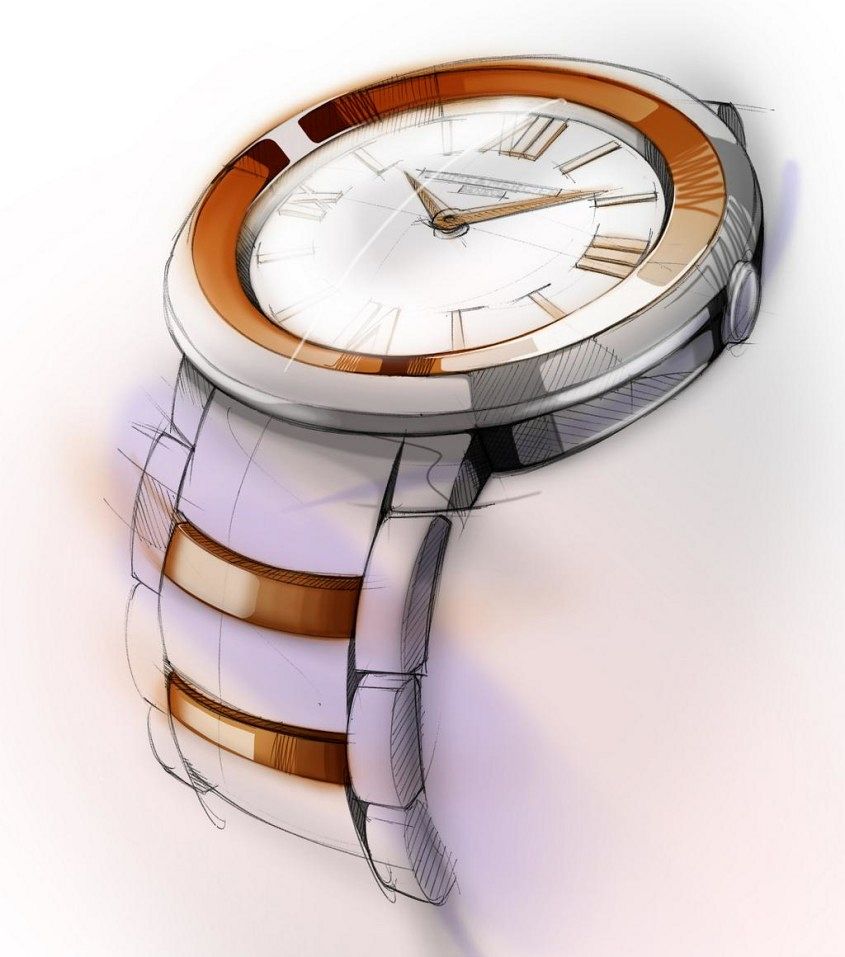
The Beauty of the Lugs
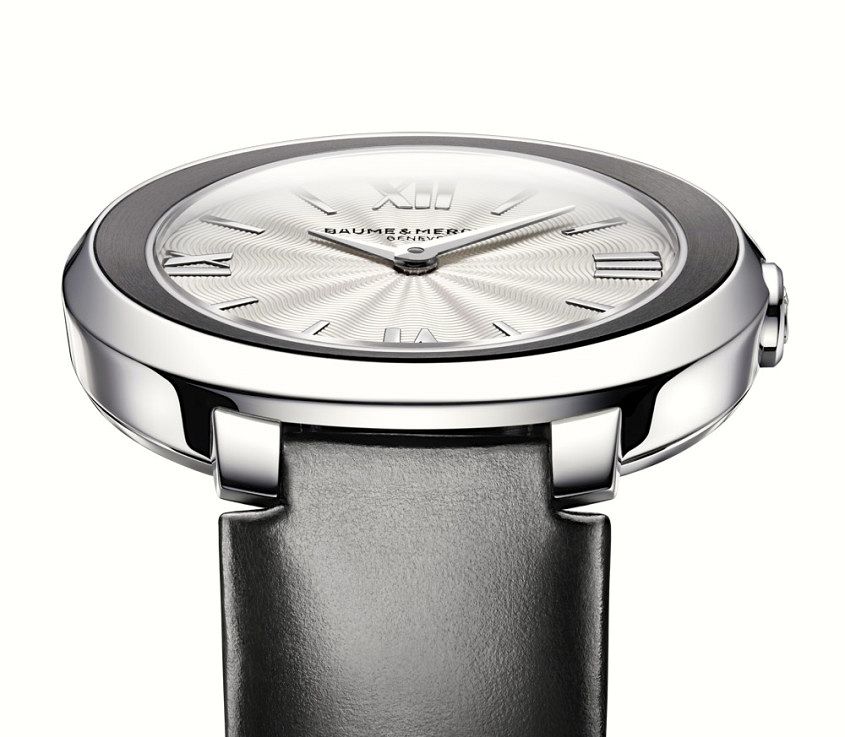
The lugs were another one of the major challenges with the design, because watch designers will tell you that lugs that snugly fit a bracelet don’t work as well with a strap and vice-versa. Early on in the development of the Promesse, Peraldi and his team had developed an integrated bracelet design that looked beautiful, but wouldn’t allow for a leather strap to be fitted. While that design was initially approved, only a few months later it was decided that a strap was a “must have”, sending the team back to the drawing board (or the 3D printer in this case).
“I was happy with the metal bracelet because it seems to be a part of the case. You don’t know if what you see is the case or the bracelet, it was so well integrated. And for a metal bracelet it was still really, really comfortable on the wrist. [The lug design] was very difficult. It seems simple now that it’s done, but it was difficult to develop this part – it had to be very, very thin. It was important to have that level of integration because if you have the first link too rigid, it enlarges a lot the size of the watch. And last night when I saw the watch on different wrists it was always perfect, sitting at a good place on the wrist and very smooth.”
Linking the Name and the Design
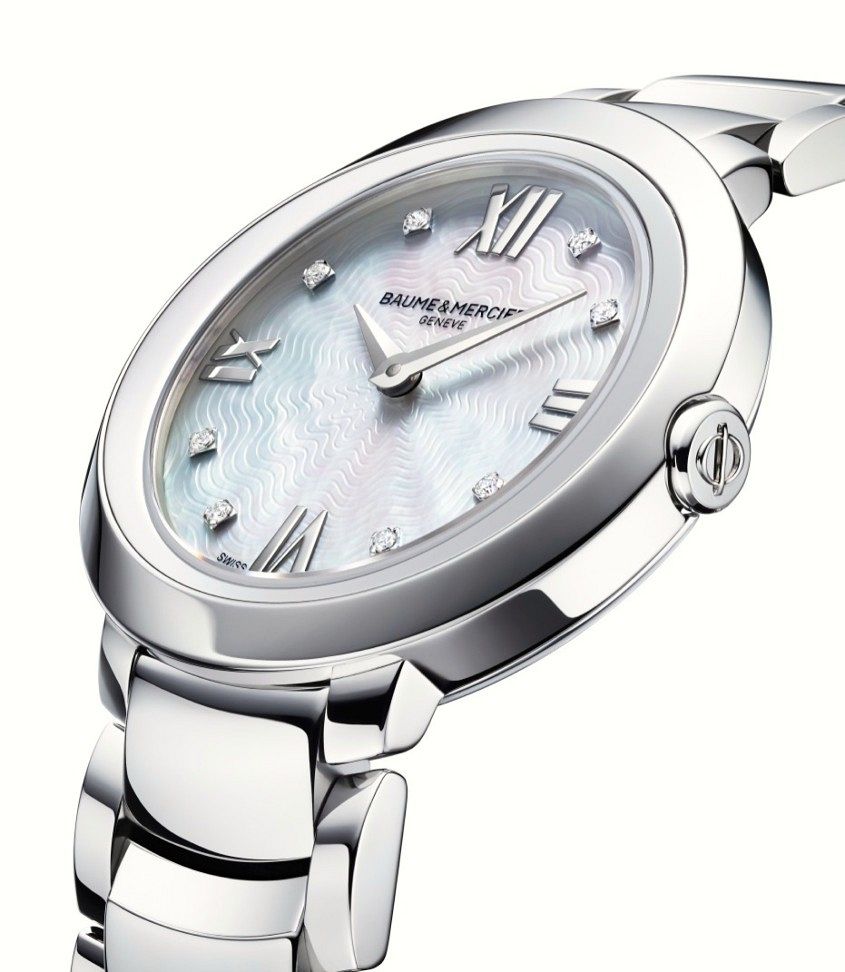
Core to Baume & Mercier’s brand story is the goal to make watches that accompany life’s special moments – watches for occasions if you like. So it made sense to reflect that ethos in the name of the new series: “We have the two ‘rings’ on the watch and we thought about them as being like a wedding,” Peraldi says. “Often the first watch that you gift can be for a wedding or engagement, so it was important for us to continue this story. Because of the way we communicate about celebration at Baume & Mercier, it was a good opportunity to use the name “Promesse”. Linking this name with the two rings was perfect.”
The Challenges of Women’s Watches
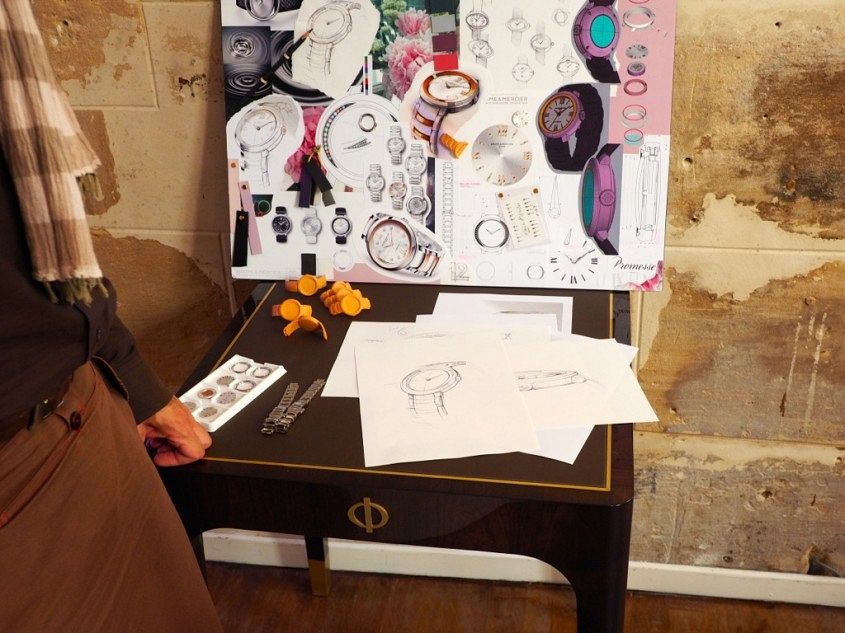
There are few places better than Paris to stage a philosophical discussion on the differences between men and women. But, as it’s only just after breakfast time, let’s keep things simple and talk about those differences as they relates to watches: “Making a women’s watch? It’s difficult! It’s really easy to design a watch for men, because men are very simple in the end. We like a big watch or a small watch; classic or sporty. Yes, we like mechanical, and we like black or metal. It’s easy with men. For women, it’s a nightmare! They like the color, but they never like the same colours. They like a strap, but also a metal bracelet. And they maybe like the style of a man’s watch, but with diamonds. So in the beginning of each project for a new women’s watch, it’s a strong battle between marketing and design and it’s very challenging.”
The Trend of Mechanical Movements for Women
Ever wondered why most women’s watches are quartz? Yes, women traditionally prefer the look of a slimmer watch, but practical considerations also play a role, for example the challenge of regularly pulling out the crown to re-set the time without damaging carefully maintained fingernails. Recently we have seen more brands offering mechanical options in their women’s range, much to the bewilderment of Peraldi, who has strong views on the topic.
“Regarding the movement, the trend is towards automatic or mechanical watches, but for me it’s a wrong trend,” he says. “I think we tried to take the strength regarding the success of the men’s watches and apply this to women. But for me, if a woman buys herself a watch, it’s not for the movement. For them, it’s not that important. It’s for the aesthetic, for the look, but not for the movement. Men buy a watch because of what there is inside the watch. In my experience, I prefer quartz for women. It’s easy. They have more than one watch, it’s thinner, elegant, and so more comfortable.”
Watches for Special Occasions
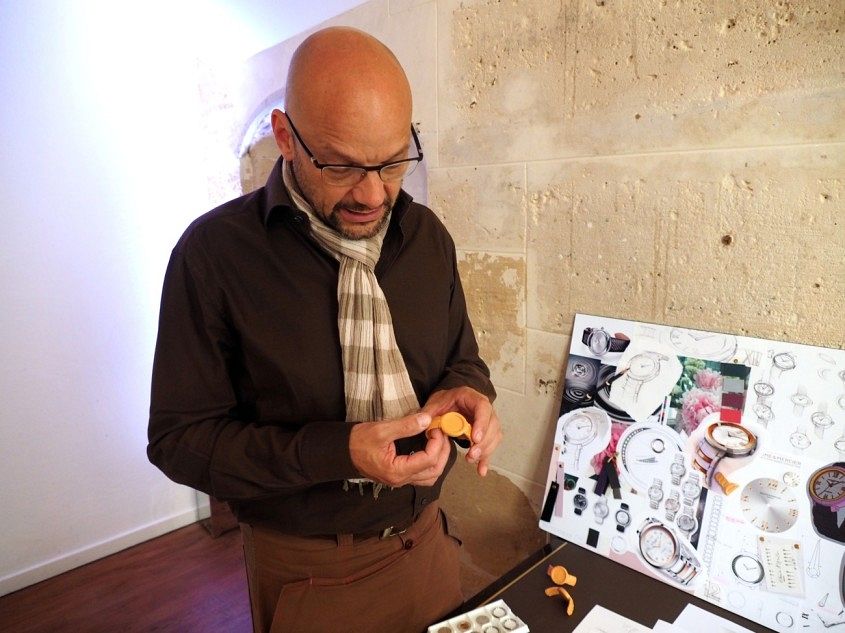
Of the watches that Alexandre Peraldi owns, the most special ones are gifts he has received from the Baume & Mercier CEO to reflect thanks for his design achievements.
“I was very happy because it was a gift because of the success of the watch. It was my design and I continue to wear it. For me, there is a story behind each watch that’s important. For men, it’s our history. We have the watch and we have always a story.”
And with the last line that comes straight from the Time+Tide book of watch philosophy, it was time to depart, but with a much richer understanding of the Promesse and how it came to be. For those who do decide to check out the new Baume & Mercier range, I’d encourage you to take the time to look closely at the watch to see for yourself some of the design elements that Peraldi has described. And whether or not you end up buying the watch, you’ll certainly come to respect the labour of love involved in creating the Promesse.




